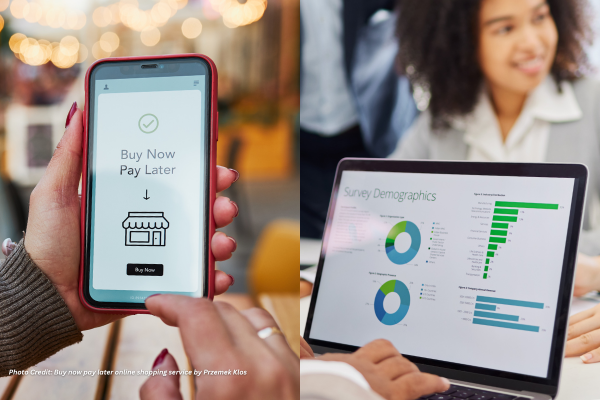As the digital landscape further expands due to technological developments, many gain the benefits of such developments, both those who seek to do positive action and those who seek to take advantage of the technology for malicious purposes. To combat emerging threats, cybersecurity has been constantly changing and adapting to dangers that constantly emerge and change, and the current trend is going towards Automation being the new line of defence.
Automation powered by artificial intelligence (AI) can limit errors caused by human intervention, reduce human exposure to sensitive data, and lower the cost of a data breach. As such, Automation has slowly been integrated into cybersecurity systems for various kinds of organisations, and this is due to its characteristics such as behavioural analysis, pattern recognition, and an improved response time to potential security threats.
With the benefits and constant development, the Australian government has committed a large amount of funds to integrate AI in its systems as well as assist local businesses in the adaptation of AI and quantum tech, which further highlights the Australian government’s efforts to adapt to an AI future as well as the significance of AI-powered automation in insuring and strengthening cybersecurity.
AI, a tool against cyber threats
On a daily basis, Australian organisations have been plagued by all kinds of digital threats, such as ransomware, phishing, and malware. The constant factor that has a significant role in said threats is simply human error, and the nationwide lack of cybersecurity experts exacerbates the issue and increases the likelihood of mistakes.
According to IBM research, the employment of automated systems and AI can close this gap while at the same time reducing the costs of operation and implementation of cybersecurity. Essentially, the implementation of an automated system and AI can aid in the process of threat identification and solution, which can also reduce costs of damage in the occurrence of a data breach while at the same time supplementing the lack of cybersecurity experts.
The lack of an automated system and AI can also lead to a cybersecurity workforce being overworked and experiencing alert fatigue when warnings arrive in large numbers. This occurrence can occur even in organisations with a well-staffed, experienced team of cybersecurity professionals. When a large number of potential threats are identified and notified, the organisation and prioritisation can be slowed down due to the limitations of a human workforce. This is further supported by a survey conducted by IDC and FireEye, with more than one-third of IT security managers and security analysts admitting to ignoring threat alerts once their queue is full.
The implementation of automation can have a significant role in reducing the workload of these cyber engineers. This can be done by automating minor tasks such as defining security rules, scanning for threats, and tracking access control to critical data. By automating these functions, cyber engineers can then focus on higher-value tasks.
If AI and automation are deployed together, security breach alerts can be immediately attended to, identified, and organised from false alarms and ensure that the most significant alerts are immediately prioritised.
Event-driven automation can also be used by digital assistants to trigger endpoint detection and reaction and then perform the relevant remediation action. Manual threat hunting can be costly and wasteful, but robots can do repeated jobs autonomously and accurately with automation, saving time, money, and effort in the long run.
Coexistence between the human workforce and AI
With the benefits being laid down, many public and private organisations have invested in and implemented various tools, solutions, and AI to secure themselves against cyber infiltration. Rather than investing in new tools and capabilities, the true opportunity is automating across this landscape’s technologies, people, and processes to create faster and more unified responses.
Traditional tools and techniques are effective but are limited. Combined with an automated system, AI and machine learning technologies can assist and boost cybersecurity analysts in threat detection and simultaneously perform manual tasks such as blocking IP addresses in firewall systems.
It must be established at the onset that automation and AI are not effective replacements for human experts and skills but are rather tools to be equipped by the workforce in the act of performing their designated tasks, supplementing their capabilities, and fill in skill gaps that organisations are not capable of filling up. Despite these technology’s capability to identify behavioural patterns and risks that humans are unable to, oversight must be established in order to ensure the ethical implementation and decisions concerning the reliability of data.
With the ever-expanding digital landscape brought on by technological advancements, individuals desiring to exploit said advances for malicious purposes have become prevalent. To combat these threats, cybersecurity systems are constantly evolving and changing with the current trends toward implementing automated systems and artificial intelligence.
This implementation can benefit public and private organisations by filling skill gaps, reducing workload, and mitigating operational costs. But rather than replacing the human workforce, a balance must be established between human, AI, and automated systems for oversight and future development. The alliance between humans and machines is the path towards improvement that government bodies and private companies are going towards.
After four years in business school and working for multinational clients, Jomar believes he can improve the world through his writings via Public Spectrum, by informing the public on the latest news and updates happening around the government and society. Jomar has eight years experience as a writer and has a degree in Business Administration and Entrepreneurial Marketing.






























































